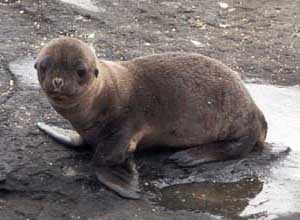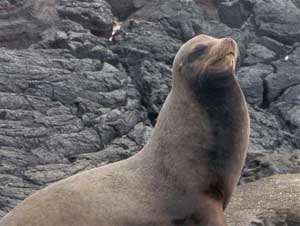 June 25, 2001 - Monday - Isabela Island - Bahia Urbina and Fernandino Island (Narlborough)
June 25, 2001 - Monday - Isabela Island - Bahia Urbina and Fernandino Island (Narlborough)
Urbina Bay - site of the 1954 15 foot tectonic uplift; large coral heads and marine forms were stranded inland by the uplift; largest marine iguana in the archipelago. Flightless cormorants nesting.
Bahia Urbina on Isabela Island - in the morning, we walked and swam. Giant tortoises, marine iguanas.
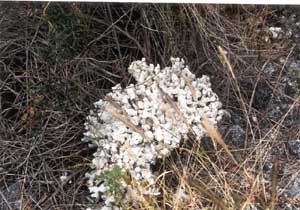
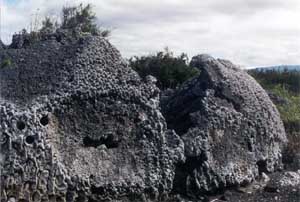
In the morning, we walked through thickets. This is the island with the 15 foot uplift that occurred in 1954. Isabela Island has 6 volcanoes, some of which are still active. The Alcedo Volcano is the one that gave us the lava floes that we walked on yesterday. We saw several mid-sized tortoises and several large, bright orange land iguanas. Yellow warblers. Lots of bright magenta crabs.
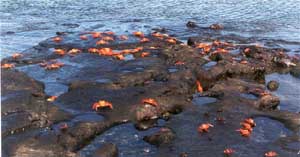
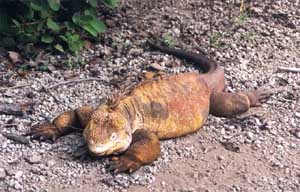
 Fernandino Island (Narborougth) - 3rd largest and westernmost island; youngest and still most active volcanic formation (200,000 years ago). Punta Espinosa - lava and sand at the base of Fernandino Volcano; very large marine iguanas.
Fernandino Island (Narborougth) - 3rd largest and westernmost island; youngest and still most active volcanic formation (200,000 years ago). Punta Espinosa - lava and sand at the base of Fernandino Volcano; very large marine iguanas.
Punta Espinosa on the smaller Fernandina (Narlborough) Island west of Isabela in the afternoon.
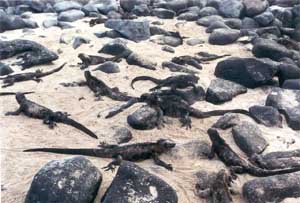 Took a short nap and then a two hour walk. On this island, we had to share space with another huge cruise ship of over 100 people who disembarked in crowds of about 30.
Took a short nap and then a two hour walk. On this island, we had to share space with another huge cruise ship of over 100 people who disembarked in crowds of about 30.
We saw Galapagos hawks high in the trees.
Thousands of black and gray marine iguanas in "unnamed" clusters. Apparently, there is no term for the marine iguana "group" .
We finally got up close and personal with a nest of cormorants -- a scrawny winged bird that doesn't fly, but swims very well.
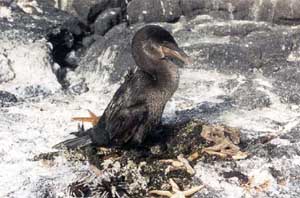 We watched the hubbie bring seaweed and sea-stars to his mate as a gift for her nesting materials. She, for her part, realizing how uncomfortable it would be to sit on a sea-star, just placed the jewels around the nest perimeter as a decoration. Good providers should be allowed to show their trophies.
We watched the hubbie bring seaweed and sea-stars to his mate as a gift for her nesting materials. She, for her part, realizing how uncomfortable it would be to sit on a sea-star, just placed the jewels around the nest perimeter as a decoration. Good providers should be allowed to show their trophies.
Evolution has determined that the cormorant had no further need to fly due to the area's absence of the threat of a predator.
Cormorant wings are so short that their only utility is to stabilize the bird during swimming. The tail provides most of the power propulsion in the water.
The same island had a whole slew of sea lions - all very contented and braying.
